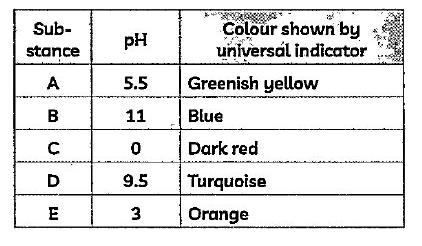Which acid is present in honey bee string ?
Sulphuric acid
Hydochloric acid
Nitric Acid
formic acid
To answer the question "Which acid is present in honey bee sting?", we can follow these steps:
Step 1: Understand the Question
We need to identify the specific acid that is found in the sting of a honey bee.
Hint: Focus on the biological context of the question, which involves the substances produced by insects.
Step 2: Consider Common Acids
Think about the types of acids that might be associated with insect stings. Common acids include sulfuric acid, acetic acid, and formic acid.
Hint: Recall that not all acids are related to bee stings; some are more common in other contexts.
Step 3: Eliminate Incorrect Options
- Sulfuric Acid: This is a strong acid used in various industrial applications but is not related to bee stings.
- Acetic Acid: This is the main component of vinegar and is not associated with bee stings.
- Formic Acid: This is known to be produced by certain insects, including bees and ants.
Hint: Look for the acid that is specifically mentioned in relation to insect behavior.
Step 4: Identify the Correct Acid
Formic acid (HCOOH) is indeed the acid that honey bees leave behind when they sting. It is also produced by other insects such as ants and wasps.
Hint: Remember that formic acid is often associated with the defense mechanisms of various insects.
Step 5: Conclusion
The acid present in honey bee sting is formic acid.
Final Answer: Formic acid (HCOOH) is the acid present in honey bee sting.
We need to identify the specific acid that is found in the sting of a honey bee.
Think about the types of acids that might be associated with insect stings. Common acids include sulfuric acid, acetic acid, and formic acid.
- Sulfuric Acid: This is a strong acid used in various industrial applications but is not related to bee stings.
- Acetic Acid: This is the main component of vinegar and is not associated with bee stings.
- Formic Acid: This is known to be produced by certain insects, including bees and ants.
Formic acid (HCOOH) is indeed the acid that honey bees leave behind when they sting. It is also produced by other insects such as ants and wasps.
The acid present in honey bee sting is formic acid.
Topper's Solved these Questions
Similar Questions
The pH values of three solutions P,Q and R respectively having equal molar concentrations are 5.0,2.8and3.5 respectively at 298 K . Which represents the correct order of their acid strength ?
View SolutionWhy is sodium metal never left open in air ?
View SolutionQuestions are based on Case Study -1
Case 1:

The substance D can not be used.
View SolutionWax glands of honey bee are present in :
View SolutionName the species of honey bee, which is used for commerical production of honey.
View Solution_________is the maintenance of lives of honey bees for the production of honey.
View SolutionClassify the following as examples of homology and analogy:
Strings of honey bee and scorpion
View SolutionWhich is the worker bee in the honey-bee family?
View SolutionHow many castes are present in the colony of honey bees?
View SolutionWhich Italian variety of honey bee is used for commercial honey production?
View Solution……………..honey bee is used to get high honey collection.
View SolutionWhich honey bee secrete bee wax ?
View SolutionName the types of honey bees present in honey bee society.
View SolutionWhich is true in case of honey bee?
View SolutionWhich is the exotic type of honey bee?
View SolutionThe acid present in the sting of bees is :
View Solution
